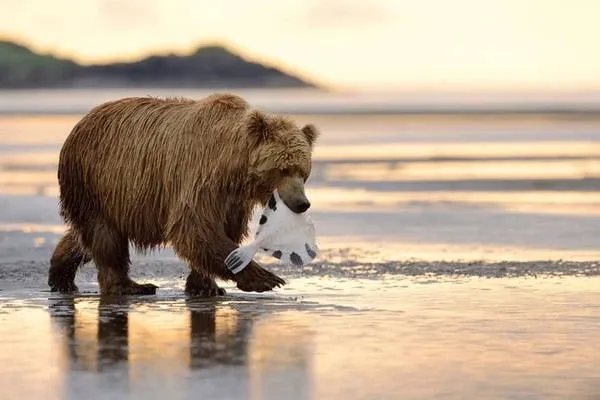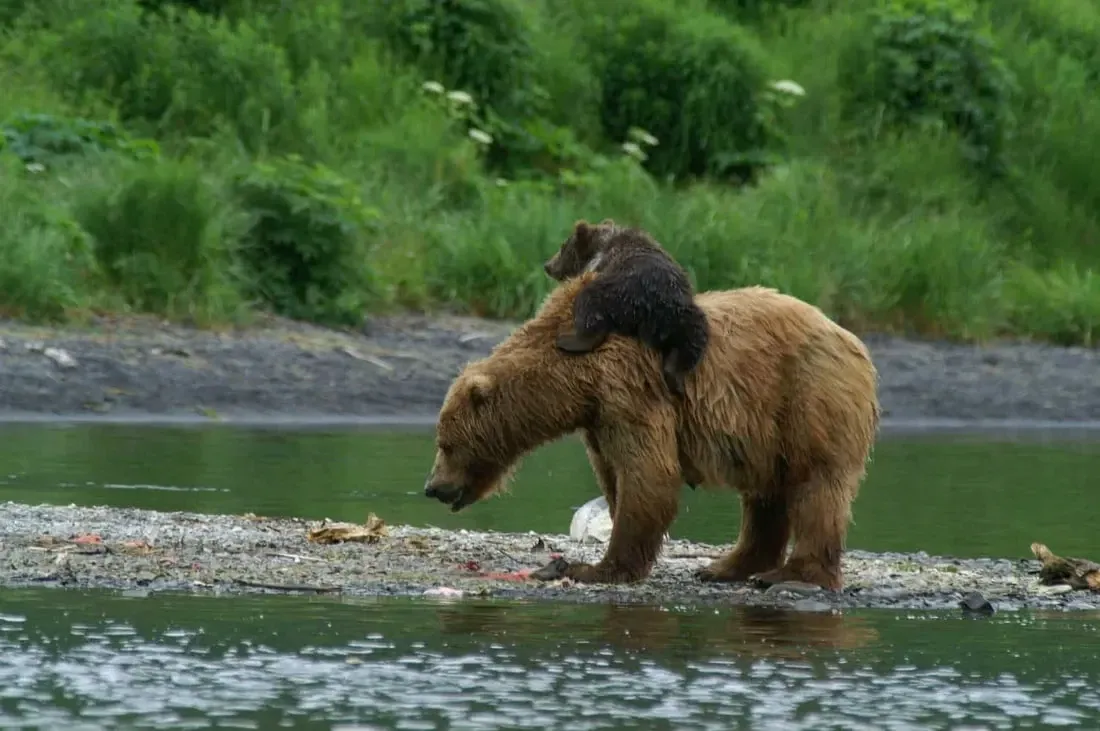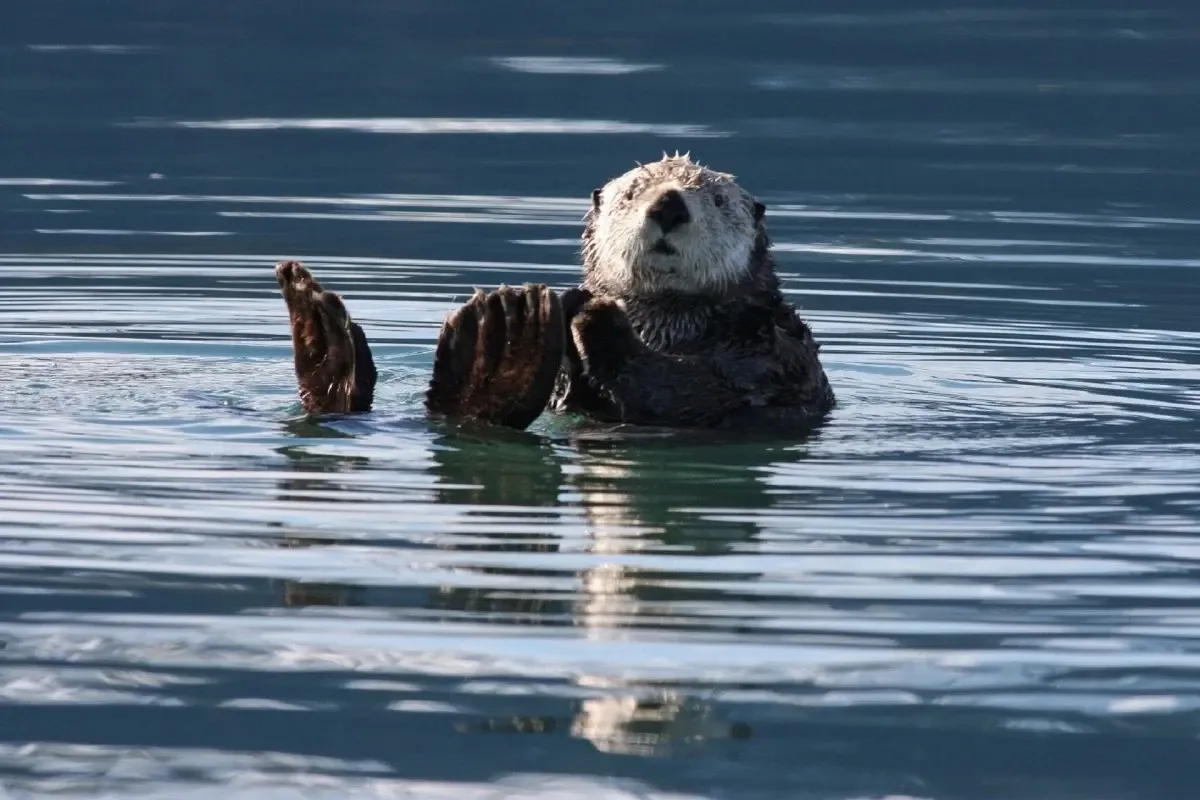Step onto Kodiak Island, and you’ll feel transported to another world, where untouched and majestic nature retains its original beauty. Nestled in the mysterious Bering Sea, Kodiak emerges like a shimmering emerald, a hidden paradise with snow-capped mountains, vast green forests, and rugged coastlines embracing crystal-clear waters. This largest island in the United States is not only the kingdom of the legendary Kodiak brown bear but also a dream destination for souls yearning to explore and immerse themselves in the wild. Join “Du lịch khắp thế gian” (Travel Around the World) as we unveil the secrets of Kodiak Island, where every step is a magical experience, and every moment is an unforgettable memory.
Overview of Kodiak Island – Alaska’s Gem
Kodiak Island, also known as the Kodiak National Wildlife Refuge, is located in the Kodiak Archipelago, southwest of Alaska. Covering nearly two-thirds of Kodiak Island, this vast area is renowned as the largest island in the United States and the second largest within U.S. territory. Kodiak’s beauty stems from the harmonious blend of towering, year-round snow-capped peaks, picturesque green valleys, tranquil narrow bays, and a rugged, winding coastline, creating a magnificent, multi-colored natural tapestry.
Kodiak is not only famous for its stunning natural landscapes but also for its incredibly rich and unique ecosystem. The characteristic oceanic temperate climate, with cool summers and wet winters, has created ideal conditions for the flourishing of diverse flora and fauna. It is the common home of the renowned Kodiak brown bear, the largest brown bear subspecies in the world, along with countless other wildlife species. Visiting Kodiak Island, you will be immersed in a tranquil, peaceful space, leaving behind the hustle and bustle of city life and fully embracing the pristine beauty of Alaskan nature.

The oceanic temperate climate also blesses Kodiak with distinct seasons, each with its own unique charm. Summer (June to August) is the ideal time to visit Kodiak, with pleasant temperatures, long days, and dry weather, perfect for outdoor activities. Autumn (September and October) drapes the island in the vibrant gold of changing leaves, creating a romantic and peaceful setting. Winter (November to April) sees Kodiak immersed in white snow, creating a mysterious beauty, suitable for those who love tranquility and want to experience winter activities. Spring (May) is when nature awakens from its winter slumber, trees sprout buds, and wildflowers bloom, bringing fresh vitality to the island.
History and Indigenous Culture of Kodiak Island
Kodiak Island is not only a pristine wilderness but also a place that preserves unique historical and cultural imprints. For thousands of years, the Kodiak Archipelago has been the homeland of the Alutiiq (or Sugpiaq) indigenous people. They are talented native inhabitants who built a unique culture in harmony with the harsh natural environment. The Alutiiq people’s lives are closely tied to the ocean and mountains, relying on the abundant natural resources from hunting, fishing, and gathering. Alutiiq culture is expressed through language, art, customs, and oral traditions passed down through generations.
In the 18th century, Kodiak Island witnessed the arrival of the Russians, marking a new chapter in the island’s history. The Russians set foot here and began a colonial period, exploiting natural resources, especially sea otters. Overexploitation caused negative impacts on the ecosystem and indigenous cultural life. However, it was also during this period that Russian explorers and scientists recorded and discovered the natural beauty and unique biodiversity of Kodiak.

Recognizing the importance of preserving the unique ecosystem and the rare Kodiak brown bear, in 1941, President Franklin D. Roosevelt signed an executive order establishing the Kodiak National Wildlife Refuge. This event holds great historical significance, marking a crucial turning point in nature conservation in the region, laying the foundation for sustainable development and biodiversity protection for future generations. Today, Kodiak National Wildlife Refuge is not only a model nature reserve but also a center for scientific research and environmental education, while also welcoming visitors to explore and experience the wilderness of Alaska.
The Amazing Wildlife World of Kodiak
Kodiak Island is truly a paradise for nature and wildlife lovers. This is the kingdom of the Kodiak brown bear, the largest brown bear subspecies in the world, with an estimated population of around 3,500 individuals. Kodiak brown bears are not only famous for their enormous size and extraordinary strength but also for their wild, majestic beauty. Visitors to Kodiak have the opportunity to admire this rare bear in its natural habitat, observing them foraging, playing, and caring for their cubs.

Besides Kodiak brown bears, the island is also home to many other wildlife species such as Sitka deer, mountain goats, red foxes, sea otters, and many rare seabirds. Sitka deer with their majestic antlers often appear in grasslands and forest edges. Agile mountain goats climb on steep cliffs. Cunning red foxes hide in dense bushes. Adorable sea otters swim playfully in the clear blue sea. And countless diverse seabirds nest on coastal cliffs, creating a vivid and vibrant picture.
Kodiak’s rich ecosystem is also reflected in its diverse flora. Lush coniferous forests stretching across mountain slopes, vast grasslands spreading across valleys, and unique tundra vegetation in high mountain areas create an ideal habitat for wildlife. Visitors can explore this diverse ecosystem through hiking trails, kayaking trips on rivers and lakes, or simply immerse themselves in nature and enjoy the fresh air.

Unique Travel Experiences and Outdoor Activities in Kodiak
Kodiak Island is a paradise for those who love outdoor activities and nature exploration. With diverse landscapes and a rich ecosystem, Kodiak offers countless unique and exciting travel experiences.
Hiking and Mountaineering: Kodiak National Wildlife Refuge has many hiking trails with varying levels of difficulty, suitable for all types of visitors. From easy coastal trails and forest paths to challenging mountain climbing routes conquering peaks, you can freely explore the wild natural beauty of Kodiak.
Kayaking and Bay Exploration: With a long coastline and many picturesque bays, Kodiak is an ideal destination for kayaking. You can explore pristine bays on your own, admire the majestic scenery from the sea, and have the opportunity to observe marine animals such as seals, sea otters, and whales.
Fishing: Kodiak is one of the most famous fishing destinations in Alaska. The waters around the island and the rivers and lakes in the national wildlife refuge are abundant with fish such as salmon, cod, halibut, and herring. Whether you are a beginner or a professional angler, Kodiak can provide you with memorable fishing experiences.
Bird Watching: Kodiak is a haven for seabirds. The island is home to hundreds of different bird species, from common seabirds like gulls and seagulls to rare birds like cormorants, terns, and bald eagles. Visitors can join bird watching tours to explore Kodiak’s rich and diverse birdlife.
Bear Viewing: Watching Kodiak brown bears in their natural habitat is one of the must-do experiences when visiting Kodiak. There are many locations and specialized tours where you can observe bears safely and enjoyably. Summer and autumn are the best times for bear viewing, when they congregate to feed on salmon in the rivers.
Camping and Wilderness Experiences: If you want to immerse yourself in nature completely, camping in Kodiak National Wildlife Refuge is a great option. There are many campsites located in beautiful and convenient locations, allowing you to enjoy the fresh air, stargaze, and listen to the sounds of the wilderness.
Conclusion
Kodiak Island – Alaska’s ultimate wilderness paradise – is an ideal destination for those who yearn to explore the pristine beauty of nature and experience the wonders of the wild world. From majestic landscapes and diverse ecosystems to fascinating wildlife and exciting outdoor activities, Kodiak promises to bring you a memorable and emotional journey of discovery. Come to Kodiak to fully experience the wilderness of Alaska and create unforgettable memories in your life.